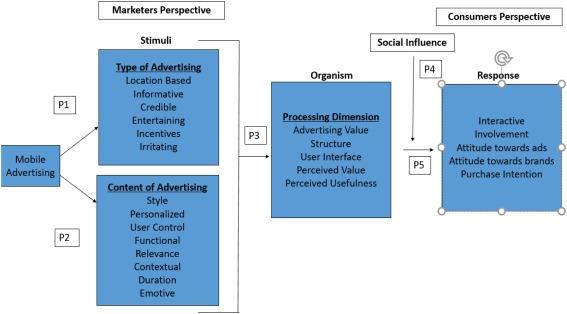Unlocking Success: Effective Training for Educators in Inclusive Teaching Practices
As today’s classrooms become increasingly diverse, teachers face the rewarding yet challenging task of meeting the needs of every student. Inclusive teaching practices are essential in fostering learning environments were students from all backgrounds, abilities, and learning styles can thrive. This article explores the importance of effective training for educators in inclusive teaching, offers actionable strategies, and highlights the transformative impact these practices can have on students and schools alike.
What is Inclusive Teaching?
Inclusive teaching is an educational approach that aims to accommodate and value diversity within the classroom. It recognizes that students come with varied experiences, cultural backgrounds, abilities, and needs. By adopting inclusive teaching strategies, educators can create lessons and environments that are accessible and engaging for all learners—including those with disabilities, language differences, or unique learning preferences.
- Differentiated Instruction: Tailoring lessons to address varied learning styles and skill levels.
- Universal Design for Learning (UDL): Building versatility into teaching methods and materials to meet diverse needs.
- equity and Accessibility: Ensuring all students have the resources and support to participate fully.
Why Effective training Matters for Educators
Without proper training, even the most passionate teachers may struggle to implement inclusive teaching practices effectively. Thorough professional progress empowers educators by:
- Enhancing understanding of student diversity
- Equipping teachers with evidence-based instructional strategies
- Building confidence to address classroom challenges proactively
- Promoting a sense of belonging and respect among students
Furthermore,effective training for educators ensures that inclusion is not just an aspiration,but a daily reality in every classroom.
key Components of Effective Inclusive Teaching Training
Not all training is created equal. Successful professional development programs for inclusive teaching share several core elements:
1. ongoing Professional Development
Continuous learning ensures teachers stay updated on best practices and emerging research in inclusive education.
2. Practical, Hands-On Workshops
Real-world classroom scenarios, role-plays, and collaborative lesson planning equip teachers with tools they can immediately apply.
3.Leadership and Peer Support
Mentorships and learning communities provide opportunities for sharing experiences, challenges, and solutions.
4. Focus on Cultural Competence
Training must address unconscious bias, equity, and strategies for teaching in multicultural classrooms.
5. Accessible Resources and Materials
Providing up-to-date, accessible teaching resources ensures educators can implement what they learn without barriers.
The Benefits of Inclusive Teaching Practices
- improved Student Achievement: Meeting varied learning needs bridges achievement gaps.
- Higher Student Engagement: Inclusive classrooms foster participation and motivation.
- positive school Culture: Students experience greater acceptance, respect, and sense of belonging.
- Professional Growth for Educators: Teachers gain skills that increase their confidence and job satisfaction.
- Readiness for a Diverse Society: Students develop empathy, collaboration skills, and global awareness.
Practical Tips: Implementing Inclusive Teaching in the Classroom
Ready to integrate inclusive teaching strategies into your lessons? Here are some practical tips to get started:
- Know Your Students
build relationships and understand individual strengths, needs, and backgrounds.
- Set Clear and Flexible Learning goals
Design objectives that allow for diffrent ways of demonstrating understanding.
- Use Multiple Means of Portrayal
Present instruction using various media—visual, auditory, and hands-on methods.
- Offer Choices
Allow students to choose from different activities or ways to complete assignments.
- Provide Scaffolding and Support
Use checklists, graphic organizers, and peer buddies to guide students who need extra help.
- Create an Inclusive Habitat
Arrange your classroom to be accessible and display materials reflecting student diversity.
- Reflect and Adjust
Regularly seek feedback and modify lessons to better meet student needs.
Case study: Transforming a School with Inclusive teaching Training
At Riverbend Elementary, a suburban school serving a diverse student population, administrators launched a year-long professional development initiative focused on inclusive education training. Key features included:
- Monthly workshops on UDL principles and differentiated instruction
- Peer observation and feedback cycles
- Ongoing support from instructional coaches
- Partnerships with special education specialists and community organizations
After one year, Riverbend saw:
- A 15% increase in overall student achievement
- Improved engagement, especially among students with IEPs and English learners
- A more positive, collaborative school culture
“It’s been incredible to watch our teachers become more confident and our students more involved,” says Principal Michelle Tran.”The shift toward inclusion has benefitted every member of our school community.”
First-Hand Experience: An Educator’s Story
For Mark, a sixth-grade teacher, traditional training often felt theoretical and disconnected from daily realities. However,after engaging in a hands-on inclusive teaching workshop,he immediately recognized improvements:
- Feeling prepared to manage diverse learning needs
- Success in building stronger relationships with students
- Greater creativity in lesson design using UDL principles
- Newfound confidence in fostering classroom discussions on diversity and inclusion
Mark shares:
“The inclusive education strategies I learned have transformed the way I teach and connect with my students. Every child now feels seen, heard, and respected.”
Conclusion: Empowering Educators, Enriching classrooms
Unlocking success in education hinges on our commitment to inclusive teaching practices and effective training for educators. As classrooms continue to diversify, it’s vital for schools and districts to invest in professional development that’s grounded in research and practical application.
- Inclusive teaching practices support academic, emotional, and social growth.
- Effective training equips teachers with the confidence and skills needed to reach every learner.
- School communities benefit from increased engagement, achievement, and a culture of belonging.
By prioritizing comprehensive inclusive education training, we can unlock the potential of all students—and empower educators to be the champions of every child’s success.

